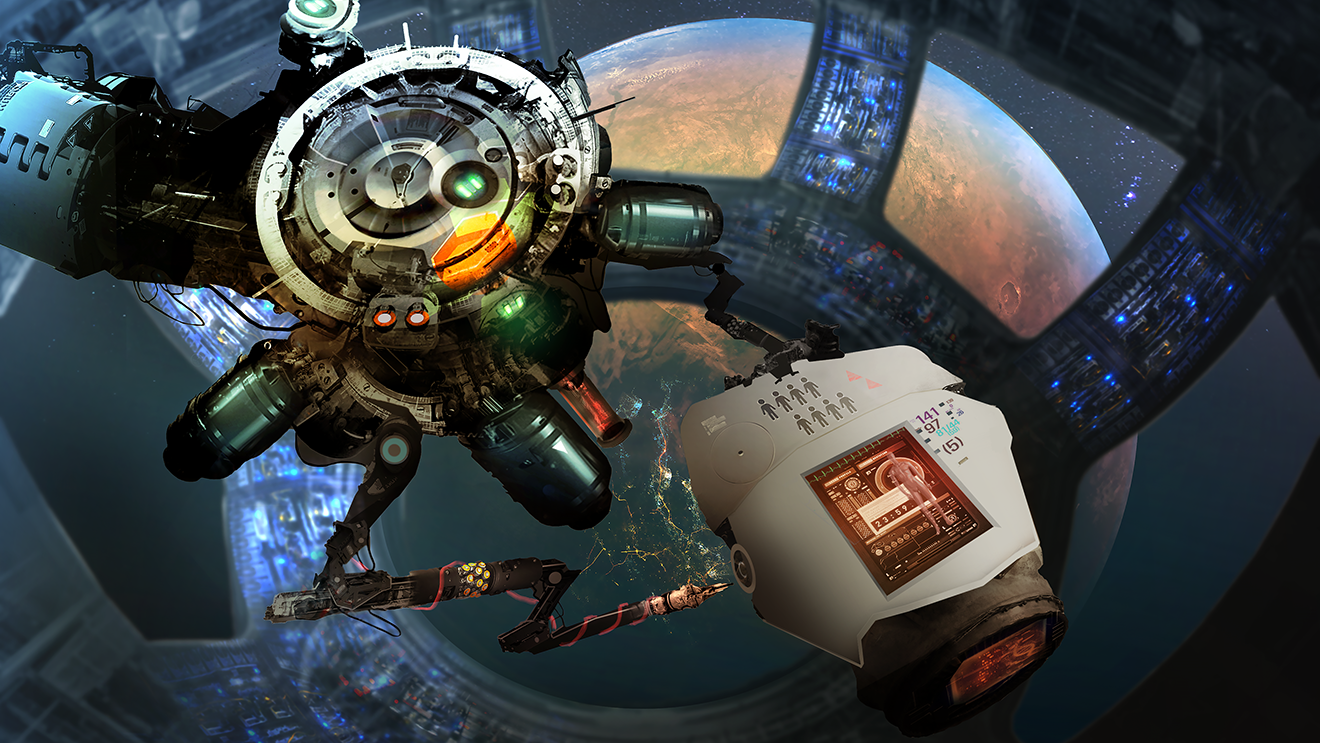Sexual Reproduction, Childbearing, and Sustainability in Space Part I
We don't fully understand about the basics of human sexual reproduction in space. For humanity to thrive in space, sexual reproduction, pregnancy, child growth, and development need to come under greater focus.

Numerous space exploration initiatives on record align with the ambition favoring humanity’s sustained presence in space. But so far, the conversations about reproductive biology and childbearing have been missing from discussions concerning long-duration spaceflight. These are issues that aren’t openly discussed or widely researched compared to the myriad physical and psychological changes to the human body. Yet, the questions about human reproduction, conception, pregnancy, fetal development, birth, child care, and development in the extremes of space will become more salient over time. How will we reproduce and sustain new generations in space?
I’m interested in these topics because they diverge from the mainstream industry coverage, so I returned to NASA’s Micro-11 mission, launched to the International Space Station in April 2018, which sent six frozen human sperm and bull sperm samples. Managed by the Ames Research Center, the experiment was designed by Joseph S. Tash, emeritus professor of molecular and integrative physiology at the University of Kansas Medical Center in Kansas City to study sperm activation and motility — the sperm’s spontaneous motion under the conditions of microgravity and increased levels of radiation in space. Any delays or problems with motility could hinder egg fertilization, a prerequisite for sexual reproduction. BioServe Space Technologies, a University of Colorado Boulder research institute, developed Micro-11’s hardware. Per the experiment’s specifications, researchers used the data from the bull sperm for quality control to differentiate the changes in both species.
No recent updates have been provided in the scientific literature about the experiment. I’ve recently reached out to the principal investigator Tash for any public updates, but I didn’t receive any response thus far. Tash had previously studied sea urchin semen in space (1997) in two space shuttle missions (STS-81 and STS-84) heading to the Mir Space Station, concluding that microgravity accelerated chemical reactions involved with the motility and activation of sea urchin sperm. Still, the sperm decelerated during the egg fertilization phase. About the history and outcome of these experiments, this is a solid write-up from 2015. In addition, some creative patches inspired by The Simpsons about these experiments can be found in niche forums online.
I came across another recent scientific paper about sperm research. An interdisciplinary team of researchers from the University of Yamanashi, Japan, the Japan Aerospace Exploration Agency, and various other institutions published their paper in Science titled “Evaluating the long-term effect of space radiation on the reproductive normality of mammalian sperm preserved on the International Space Station.” Their experiment selected twelve sperm samples from male rodents, freeze-dried them, and distributed them in six boxes. Three boxes were launched and preserved on the ISS, and the rest remained on the ground in lab conditions. The first sample box returned from the ISS nine months later, the second two years and nine months, and the final returned five years and ten months after launch, constituting the longest time that biological samples have been preserved in space.
The researchers concluded that freeze-drying sperm afforded better protection against radiation than storing fresh (untreated) sperm cells in culture containers on the ground. The experiment also proved that freeze-drying sperm extended their bioavailability for research in microgravity. Also, the rodent’s offspring presented no irregularities and normal sexual maturity, even compared to the ground-control untreated specimens.
The Japanese researchers’ conclusions provided a thought-provoking scenario explaining our civilization’s need to focus on genetic preservation beyond Earth.
“Furthermore, genetic resources are an asset to humanity’s future. Although many genetic traits are not needed for survival, depending on the environmental context, it is necessary to preserve them as much as possible so that species can survive if unknown diseases are spread, or environmental changes occur, such as global warming. However, in the 2011 earthquake in Japan, an unexpectedly high tsunami that was over 40 m tall caused a nuclear reactor explosion, and the surrounding area was exposed to high levels of radiation. Thus, global and serious disasters will happen more than expected, and it is difficult to find a permanently safe place on Earth. To conserve genetic resources permanently even in such a situation, extraterrestrial preservation of germ cells is a new choice for our future. For this purpose, freeze-drying spermatozoa, oocytes, or embryos is a better solution than traditional cryopreservation.”
I have seen other scientists in the space community articulate a similar justification for looking ahead at genetic preservation beyond Earth. For example, a team from the University of Arizona presented a detailed architecture for a “Lunar Ark” at the 2021 IEEE Aerospace Conference to shelter DNA matter, eggs, sperms, and seeds in lunar pits and the extensive network of lava tubes. These underground lava tubes are cold and inhospitable, being the ideal type of environment for keeping things undisturbed.
The Case for More R&D
The scientific research about the numerous physiological and psychological changes to the human body is extensive. Vast knowledge can be drawn from these preliminary findings—the most notorious being NASA’s groundbreaking Kelly Twins Study. Experimental data was published in Science in April 2019, detailing the extent of research into gene expression, telomere length dynamics, cognition, and immune responses, among others. But there is a colossal amount of information we don’t know about the basics of human sexual reproduction in space. And much of the scientific literature expands on vault architectures for preservation or experimental studies, primarily with rodents, fish, and amphibians. As a result, a handful of physicians and scientists are raising their voices about the need to look beyond. For humanity to thrive in space, sexual reproduction, childbearing, growth, and development need to come under greater focus.
BONUS: A Conversation With A Future-Oriented Artist
Oleg Danilenko is a Ukrainian self-taught artist. I’ve collaborated with Oleg for a previous article, so I’ve commissioned a new piece from him titled “Childbearing in Space” just for MONI-07B. I’ve transcribed our conversation about his creative process.
What do I think about the future of humanity in space?
Space is the next level, the next chapter in the history of humanity. A long time ago, people lived in tribes and knew little about their world. Their knowledge grew, and now, after so many centuries of scientific development, we can travel the world with the help of modern technologies using Google Earth. We can also see Mars with two clicks or look into the neighboring galaxy, similarly to how we study what kind of land is beyond the ocean using Google Earth.
The cosmos brings a new, even more extensive, boundless chapter of discoveries. Human beings are curious, and our desire to see the world is beyond doubt. But, whether it’s idle curiosity or a mathematical calculation to obtain new resources beyond Earth, space is like a vast, uncharted ocean, and we have just learned how to build boats and attach sails.
Why is it essential to think about child growth and development?
The foundation of human nature is procreation, to save and raise stronger offspring. Without strong offspring, there will be no “golden” future.
Should we consider alternatives to settling on Mars?
Mars is a unique planet with many secrets, theories, and legends. It is so interesting to everyone because it allows dreams and fantasy to become part of our cosmic reality. It presents life beyond the generally accepted standards - Earth’s gravity, day and night, sunsets and dawns. Mars is the nearest planet visible from our “old world” and the easiest to visit, this is decisive, but at the same time, it represents a cautious step for humanity as a colonizer of a new era.
To obtain new resources, technologies, and knowledge, one must explore other “places” and move and advance with a plan. For example, Mars can become, by coincidence, or luck, a planet favorable for settlement and located relatively close by. But without new settlements located in the right places and without special technologies, we can only be content with what we have. We can only be content with the chances we get.
What were your thoughts / creative processes when creating art?
Creativity and art help to visualize what does not exist. Why not dream and move forward in time 100 years, 200 years, or 300 years ahead and make a snapshot of the future?
//
Stay tuned for part II featuring the in-depth perspectives of a physician specializing in space health.

